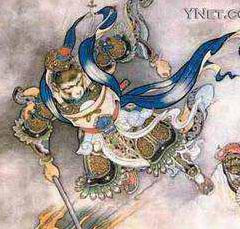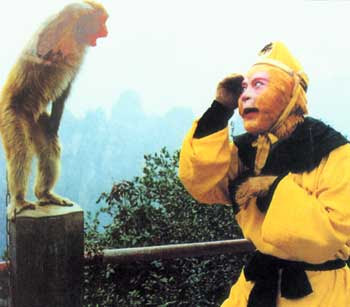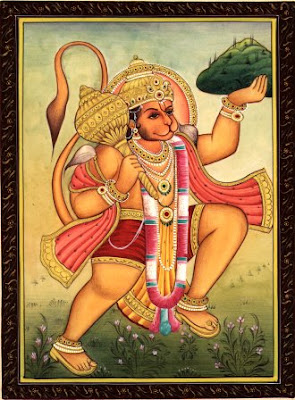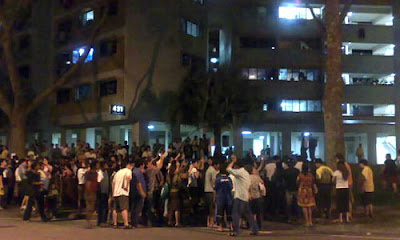 The 8th consciousness is a concept taught in the doctrine of the Yogacara school of Mahayana Buddhism. They enumerate the 5 senses, supplemented by the mind, the defilement of the mind (klesha), and finally the fundamental store consciousness (ālaya vijñāna), which is the basis of the other 7. This concept is not taught in the Theravada. One could think of it as a field that stores all the seeds of your good & bad karma from all your past lives until the present life. It is the most subtle core of the being that we believe to be our "self".
The 8th consciousness is a concept taught in the doctrine of the Yogacara school of Mahayana Buddhism. They enumerate the 5 senses, supplemented by the mind, the defilement of the mind (klesha), and finally the fundamental store consciousness (ālaya vijñāna), which is the basis of the other 7. This concept is not taught in the Theravada. One could think of it as a field that stores all the seeds of your good & bad karma from all your past lives until the present life. It is the most subtle core of the being that we believe to be our "self".So what can we do about this alaya vinnana? One cannot reach it in the normal state of consciousness. You can only reach it by deep meditation until the formless jhanas. The 4 formless jhanas are none other than the 4 aggregates of the mind focused at a single point. The jhana of infinite space corresponds to a universal "feeling" of emptiness. The jhana of infinite consciousness corresponds to "cognition" expanded outwards. The jhana of nothingness corresponds to "mental formations" coming to a temporary halt, and the jhana of neither perception nor non-perception corresponds to "perception" being unable to identify itself. The mind appears to be infinitely empty and unmoving in those states, deceiving many undiscerning meditators to believe they have attained Nibbana; but in reality it still contains very subtle seeds of defilement called Avijja (fundamental ignorance). This is what is meant by a field or store. Once they receive the right stimulus (external conditions) they will develop into the plants of either lobha (likes), dosa (dislikes) & moha (unawareness).
Therefore Jhana by itself is useless if one does not use Vipassana to reflect on the nature of those states of mind. It is through constant mindfulness of aniccam, dukkham & anattam leading to dispassion that gives one the wisdom to destroy the seeds of Avijja and reach Nibbana. Once that is achieved, the field transforms into a bright mirror - everything can be reflected in it but nothing ever sticks on to it. The alaya vinnana is gone forever and what is left is only the Bodhicitta - the awakened mind.
As Chan Master Dazhu Huihai taught in his treatise, the 8 consciousnesses are transformed into the 4 Buddha Wisdoms. The eyes, ears, nose, tongue and body - these 5 consciousnesses together become Accomplishing Wisdom. The 6th consciousness of the mind alone becomes Observing Wisdom. The 7th consciousness alone becomes Equanimous Wisdom and the 8th consciousness alone becomes Perfect Mirror Wisdom.
How do these 4 Buddha Wisdoms apply to our awakened mind? Ven Dazhu further taught that when the mind is deep and still like the void, bright and completely motionless - this describes Perfect Mirror Wisdom. When no sense object can cause a single thought of like or dislike to arise, then duality is void. This voidness of duality is Equanimous Wisdom. When all the sense organs can discriminate clearly in their respective realms, but no confused thought arises to hinder the freedom of the mind - this is Observing Wisdom. When all the sense organs can be used at the appropriate time, in a correct way with no discrimination of form -- this is Accomplishing Wisdom.
And how do the 4 Buddha Wisdoms relate to the 3 Bodies (Trikaya) of the Buddha? The Perfect Mirror Wisdom becomes the Dharmakaya (Reality Body). The Equanimous Wisdom becomes the Sambhogakaya (Reward Body). However, Observing Wisdom and Accomplishing Wisdom combine to become the Nirmanakaya (Emanation Body). These 3 Bodies are set up as names and differentiated as concepts only as an expedient means to help those who do not yet understand the Dharma. If one readily understands this doctrine, the expedient means of the 3 Bodies is not necessary. Why is that? Because one clearly comprehends that their nature are formless, being established only from the fundamental non-abiding mind, which also does not exist.
So practice Samatha-Vipassana meditation earnestly, until one can vanquish Avijja and transform the Alaya Vinnana into Perfect Mirror Wisdom or Dharmakaya. Then you will know for yourself what the Buddha has taught. This is the path taken by all Noble Ones.

 In India the Black Buddha Image is a called Teliya Baba (Luang Por Nam Man) or Mota Baba (Luang Por Wan) because people apply oil to the body of the Buddha image, and this oil is also used on thin babies, in the belief that it will make the child fat and healthy. In Thai the Buddha image is called Black Buddha Image (Luang Por Ong Dam) as the image is made of black stone. Both Indians and Thais respect the Black Buddha Image very much.
In India the Black Buddha Image is a called Teliya Baba (Luang Por Nam Man) or Mota Baba (Luang Por Wan) because people apply oil to the body of the Buddha image, and this oil is also used on thin babies, in the belief that it will make the child fat and healthy. In Thai the Buddha image is called Black Buddha Image (Luang Por Ong Dam) as the image is made of black stone. Both Indians and Thais respect the Black Buddha Image very much. In 1994 Phra Kru Pawana Jitsunthon the abbot of Wat Aranyigavas in Ban Peu, Udon Thani, made a pilgrimage to India and visited Wat Thai Buddhakhaya (Mahabodhi Temple in Bodhigaya), the place where the Lord Buddha attained enlightenment. He paid respect to the 60 inch-wide Buddha image called “The Kind Buddha” and he brought a model of this Buddha image back to Thailand in order to make a copy.
In 1994 Phra Kru Pawana Jitsunthon the abbot of Wat Aranyigavas in Ban Peu, Udon Thani, made a pilgrimage to India and visited Wat Thai Buddhakhaya (Mahabodhi Temple in Bodhigaya), the place where the Lord Buddha attained enlightenment. He paid respect to the 60 inch-wide Buddha image called “The Kind Buddha” and he brought a model of this Buddha image back to Thailand in order to make a copy.



 Self-mutilation is actually quite normal during Taoist or Hindu religious ceremonies, but for the uninitiated, one can imagine how scary it would be for them to see it in real life. Despite the emotional setback,
Self-mutilation is actually quite normal during Taoist or Hindu religious ceremonies, but for the uninitiated, one can imagine how scary it would be for them to see it in real life. Despite the emotional setback,  Who are these 2 deities? There are many versions of their origins, but the popular one in Singapore, Malaysia and Taiwan is that during ancient times there were 2 sworn brothers by the names of
Who are these 2 deities? There are many versions of their origins, but the popular one in Singapore, Malaysia and Taiwan is that during ancient times there were 2 sworn brothers by the names of 

















 Some Chinese people believed that it was
Some Chinese people believed that it was  It says that: "Three yrs ago, a divine monkey had come searching for his father, the Monkey God, at this tree. But it was only until a recent accident which caused the bark of the tree to fall off that the Monkey God became freed. I (the uncle) discovered the image on the tree on Sep 9
It says that: "Three yrs ago, a divine monkey had come searching for his father, the Monkey God, at this tree. But it was only until a recent accident which caused the bark of the tree to fall off that the Monkey God became freed. I (the uncle) discovered the image on the tree on Sep 9

 But whether it is Sun
But whether it is Sun 

 On 25th August 2007 I made another trip to Pattani in Southern Thailand. Besides the usual temples I also went to Wat Rai this time. Wat Rai is a new temple which needed funds to build its Ubosot & other buildings. Above is the current abbot of Wat Rai, Ajarn Daeng. When I went there he was not around, but at Wat Phra Mahathat in NST to participate in a Jatukam consecration ceremony.
On 25th August 2007 I made another trip to Pattani in Southern Thailand. Besides the usual temples I also went to Wat Rai this time. Wat Rai is a new temple which needed funds to build its Ubosot & other buildings. Above is the current abbot of Wat Rai, Ajarn Daeng. When I went there he was not around, but at Wat Phra Mahathat in NST to participate in a Jatukam consecration ceremony.








 Ajarn Daeng's LP Tuad amulets as well as bullet shell takruts. They are excellent for protection. The Thai Army guys in the area like his takruts very much. Readers interested in getting some of these stuff can email me at
Ajarn Daeng's LP Tuad amulets as well as bullet shell takruts. They are excellent for protection. The Thai Army guys in the area like his takruts very much. Readers interested in getting some of these stuff can email me at 




 This is one of LP
This is one of LP  Wat
Wat